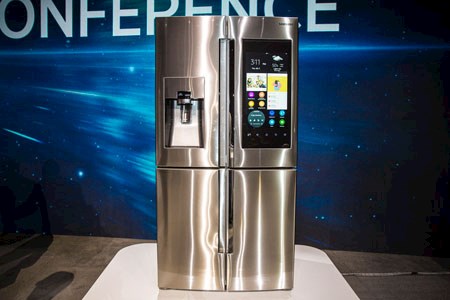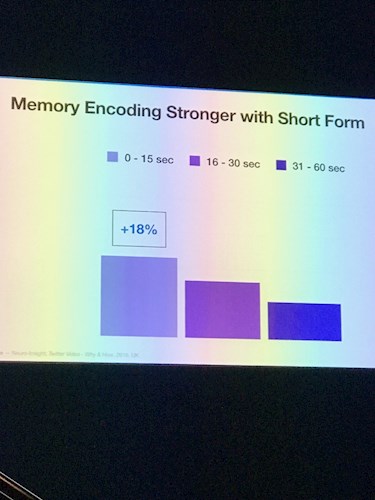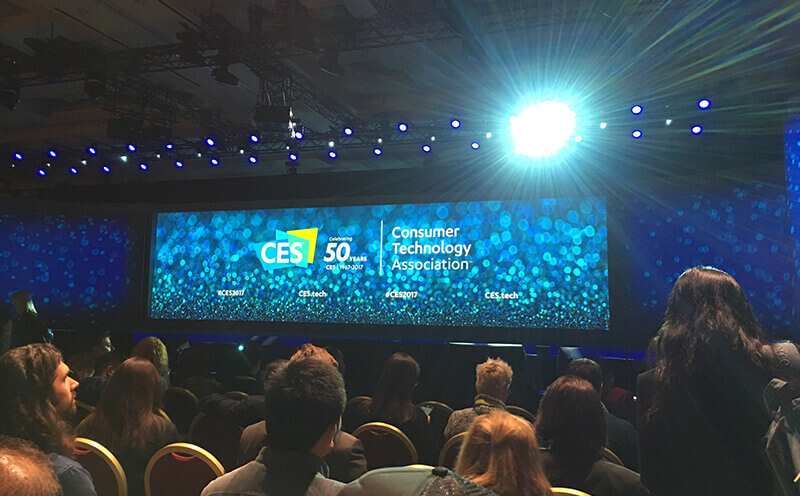Swarm was on location at this year’s CES 2017 in Las Vegas. Words cannot describe the magnitude of the Consumer Electronics Show where over 180,000 people from around the world come with Fitbits charged and sneakers laced in order to traverse 3 million square feet of the latest advancements in consumer technology. We went to the show this year to gain a better understanding of how these advancements in technology are going to impact our digital strategies to reach consumers for our valued clients.
To help explain what it’s like to be at the show, I tweeted out this brief video that pretty much sums it up.
Here are the 3 trends in digital marketing that made a big impact on us during this year’s show:
1) Our lives are creating data faster than ever before.
As we go through life we are creating data, and it’s important to keep in mind that every single thing at this show is a consumer touchpoint. The questions we must ask ourselves is:
- How do I collect this data?
- What must I learn from this data?
- How will I make it actionable?
As marketers, we must think about the context of the user like never before. The velocity of data is increasing and will always increase, so we must act quickly with the actionable insights gathered when people are interacting with smart devices. It isn’t just about your computer and phone any more. It’s our wearable devices, appliances, automobiles and much more.
To give an example, Samsung has a refrigerator that includes a camera inside. This camera is connected to a computer that keeps track of what food items you have, how long it’s been there, and it will remind you when items might be expiring. With their Samsung App on your phone, you can even take a peek inside your fridge while you’re at the grocery store to see what you might need to purchase. [Mind Blown]

The opportunities for the CPG industry to learn from consumer purchasing behaviors and create a better user experience (even a branded one) from fridge to purchase are exciting to say the least.
How you can take action:
Take a big step back and think forward on how your target audiences are using technology. Start by gathering all analytics and data you have about your audience and make a list of ideas that need further research.
Be naturally curious and do the research. Don’t take anything at face value and challenge everything you read. Try asking yourself questions like:
- Ok, that’s great, but is it cool or is it actually useful? Useful to whom? Don’t forget to apply this to your revenue streams.
- What’s the simplest and most cost effective way I can prove this might work? Testing your hypothesis with A/B testing and user experiments is a great way to accomplish this.
Thought Starter: Does your audience lead an active lifestyle? Then what would it be like to tie the FitBit API to your next promotional campaign or social media activation? Make the campaign tie into the number of steps or goals reached over time and reward your participants for reaching their goals.
2) You better be thinking about voice search.
Google says that 20 percent of mobile search inquiries are voice initiated. That’s a big number. But it’s not just about using your voice to search the web any more.
We’ve been looking for a way on how to bring IoT (Internet of Things) together and there’s been no killer app or easy way to access these IoT devices, until Amazon Alexa. With the surprising ability of Alexa’s voice search, you can simply speak to the device and ask it to perform tasks with other smart devices in your home. The learning curve is minimal and it’s a high quality Bluetooth speaker. Over 1,100 different companies at the show were claiming that they are Alexa compatible. It was everywhere. The rise of voice search is prompting the major players such as Google, Siri, Alexa and automobiles to simply provide answers. We all know today that brands must also act as publishers.
Voice search is a key opportunity for brands to provide the answers being asked by your audience. Make sure your SEO strategy includes ways to leverage Rich Snippets, microformats and the Google Knowledge Graph and one day, your brand might help Alexa answer that next question your audience is going to ask.
3) Keep the content short
Twitter was at the show presenting a keynote and they talked about the journey they’ve taken in re-branding themselves.
News flash… Twitter is NOT a social media app. It’s a news app. It’s about what’s happening right now, not about socializing about what you’re doing any longer. Twitter has done the research and has the data to prove just what types and lengths of content make the biggest impact. They not only talked about making impactful content, but also memorable content.
Twitter also talked about how our attention spans have shortened significantly over time since the introduction of so many devices and distractions. Meanwhile, cognitive ability has increased. So, what does this mean for marketers? It’s our job now more than ever to visually impact our audience in new and creative ways and we need to do it extremely fast.
Content is more likely to be remembered in a news or social feed if it is less than 15 seconds. Want to make an impact? You need to do it in the first 3 seconds.

This example by Converse on Twitter promoting their Blank Canvas Tool is visually engaging and creates an impact in just a few seconds. Looks to me like I can now customize my kicks with Converse. Mission accomplished for Converse.
It’s critical now more than ever to take on Content Strategy as a “Short Form Content Creator.” Don’t just think video, think animation, stop-motion and other video tactics that can be leveraged on the channels you are targeting.
